

Introduction
The A6700 is the new flagship model in Sony’s range of APS-C sensor mirrorless cameras, positioned above the A6600 and below the A7C.
Sony have principally added a new sensor and processor, more advanced video recording and auto-focusing, and a refined design to try and make the A6700 the best cropped-sensor camera that they’ve ever produced.
The Sony A6700 uses the same 26 megapixel Exmor R backside-illuminated (BSI) CMOS sensor that was employed in the FX30 cinema camera, joined by the latest Bionz XR processor.
It has a native ISO range of 100-32,000, which can be pushed two stops further to ISO 204,800 and drop down to ISO 50 if required.
The A6700 can capture oversampled 4K video from 6K at up to 60p with no crop and also offers 4K/120p with a 1.62x crop. Video can be captured in 10-bit 4:2:2 or 4:2:0 in either H.265 or H.264 AVC files.
The Slow and Quick motion mode offers frame rates ranging from 1fps to 240fps at 1080p quality. It also has the ability to shoot the same video Picture Profiles as its full-frame A7-series bigger brothers and features both 3.5mm mic and headphone ports.
The Alpha A6700 has an auto-focus system with 759 phase-detection points and 25 contrast points that cover 93% of the frame, with the system working all the way down to -3EV low-light.
Furthermore, the Sony Alpha A6700 offers Real-time Recognition AF with AI-based subject recognition for humans, animals, birds, airplanes, cars, trains and insects.
The A6700 has a fully articulating, vari-angle 1.03-million dot LCD monitor with touchscreen operation and a 2.36million-dot XGA OLED electronic viewfinder.
It also offers 5-axis optical in-body image stabilisation rated worth up to 5 stops of compensation, 11fps burst shooting with continuous AF/AE tracking, live streaming support, Bluetooth and wi-fi connectivity and a single SD UHS-II memory card slot.
The Sony A6700 is available in black priced at £1450 / €1700 body only, £1550 / €1800 with the Sony E PZ 16-50mm F3.5-5.6 OSS kit lens or £1800 / €2100 with the E 18-135mm F3.5-5.6 OSS zoom lens. It is made in China.
Ease of Use
 |
Externally the new Sony A6700 is extremely similar to the previous A6600 camera, so much so that you’d be hard-pressed to tell them apart side-by-side.
Once again, Sony haven’t really deviated very much from the design of the original Alpha A6000 model that was released way back in 2014.
Although the A6700 and the A6600 are externally very similar, Sony have made a few notable improvements to the new model.
Firstly, the handgrip on the A6700 has been made larger and more prominent to offer greater balance with heavy or telephoto lenses.
There is now a second command dial at at the top of the handgrip which makes it even easier to change the key exposure settings in conjunction with the rear command dial.
On the rear, the Still/Movie/S&Q dial from the A7 full-frame series has made its way onto the A6700, joined by a larger, more prominent AF On button and a new C1 custom button which accesses the white balance settings by default.
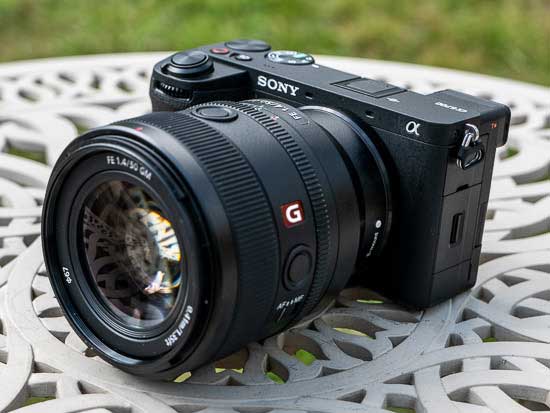 |
The much clearer although still lengthy main menu system from the ZV-E1 camera has been included on the A6700 along with a greater number of touch controls including the ability to operate the menu system and swipe up to open the Function menu.
These are joined by an array of onscreen touch icons that are specific to the stills and movie modes.
The A6700 measures 120.0mm x 66.9mm x 69.3mm and weighs in at 503g with the battery and memory card fitted, making it slightly bigger and about 100g heavier than the A6600.
As with that model, the Sony A6700 employs a tough magnesium alloy body shell that incorporates full weather sealing for extra peace of mind in inclement conditions.
The Alpha A6600 has an even deeper, more sculpted hand-grip than its predecessor that is relatively wide and comfortable to hold on to, which combined with the rear thumb rest makes the camera feel secure enough when shooting either one- or two-handed.
The A6700 is Sony’s latest camera to feature optical 5-axis image stabilization. The A6700 offers 5-stops of compensation, with the in-body system ensuring that the camera can stabilize all kinds of lenses, including E-mount lenses without Optical SteadyShot (OSS) and A-mount lenses as well.
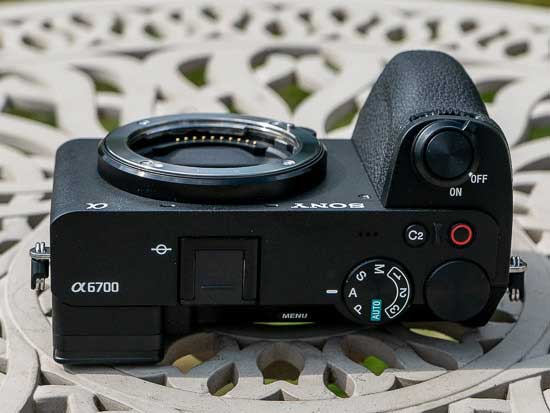 |
Sony claim that the A6700 has an updated algorithm that provides more precise control and detection down to the single pixel level, but we’re not sure at this point what material effect that has on the resulting images.
Note that third party lenses without any electronic contacts only benefit from three axes of compensation, and you need to input which focal length you’re using via the menu system.
The A6700 features almost exactly the same 2.36million-dot XGA OLED electronic viewfinder as the one used by the A6600.
It provides 0.70x magnification, 23mm eyepoint, 100% scene coverage and either a 60fps or 120fps frame rate setting, the latter helping to help track moving subjects more smoothly with virtually no lag.
The single difference between the two cameras is that the A6700 has a brighter EVF that’s almost equal to the one found in the A7R V full-frame camera.
Whilst this 6-year-old viewfinder is perfectly respectable, we’d have expected to see a higher-spec model used on the new flagship A6600.
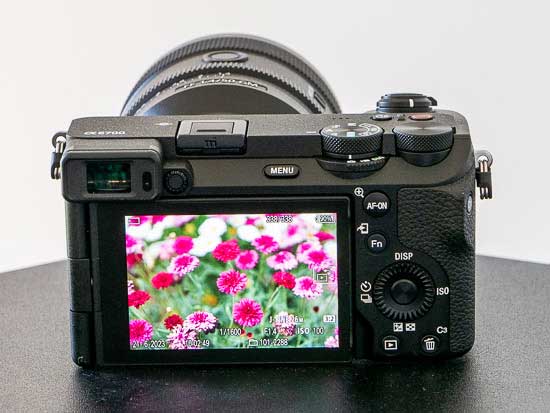 |
The same is also true of the 3-inch widescreen LCD monitor. The Alpha 6700 has a slightly higher-resolution 3-inch, 3:2 ratio LCD screen than the A6600 – 1.03 million versus 922,000 dots – but we’d have expected to see a much higher resolution screen on a new camera released in 2023.
There is one major change, though, that’s very welcome. The A6700’s screen has a fully articulating vari-angle design which is a big improvement on the A6600’s flip-up design, which can only be tilted down by 74 degree and up by 180 degrees and can’t also be tilted out to the side.
On the A6700 you can flip out the screen to the side, rotate it forwards for easier operation when pointing the camera at yourself, and fold it flat against the back of the camera to stop it from getting scratched.
So while the core specs of the LCD screen are almost the same on both models, the free-angle design on the A6700 means that it’s simply a more versatile screen for vlogging, movie shooting and photography in general.
Sony have also implemented touch sensitivity on the LCD screen. This makes functions like focus point selection much easier and more intuitive, especially given the continued lack of a dedicated AF joystick, and it even works while looking through the electronic viewfinder.
Unlike the previous model, you can now use the touchscreen to navigate the main menu or quick menu settings and even swipe through your images in playback mode, something that rival cameras have had for ages and now something that has finally been implemented on a Sony A6000-series camera.
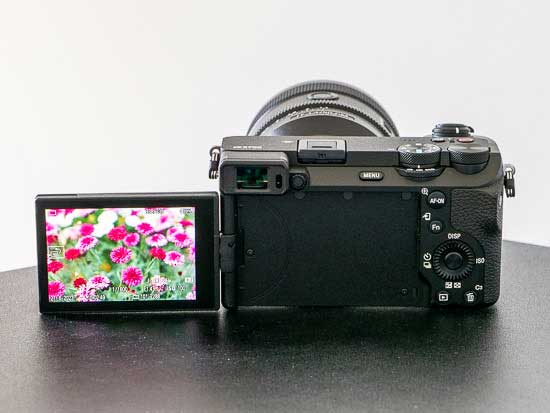 |
This makes functions like focus point selection much easier and more intuitive, especially given the regrettable lack of a dedicated AF joystick on the rear.
The Sony A6700’s primary external controls are virtually identical to those on the A6600.
The biggest change is the addition of a second command dial at at the top of the handgrip which makes it much easier to change the key exposure settings in conjunction with the rear command dial, enabling simultaneous thumb and forefinger settings adjustment..
On the A6600 you had to use the secondary rear-panel scroll wheel that doubled-up as the 4-way navigation buttons, which was a less satisfactory solution.
One the rear there’s a larger, more prominent AF On button which follows the design of the A7-series full-frame camera and effectively replaces the AEL / AF/MF switch/button found on the A6600.
This new button makes it a snip to back-button focus using your thumb rather than half-pressing the shutter button, a method that many photographers swear by, and also to magnify an image during composition or playback.
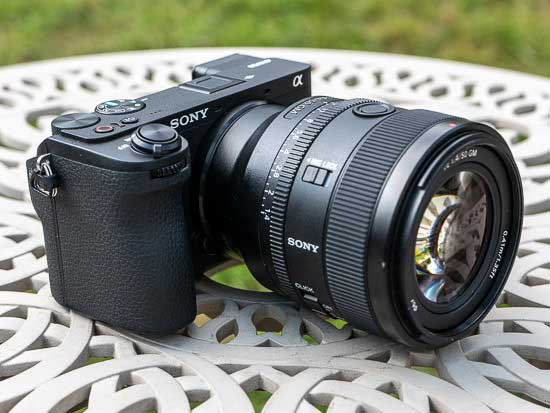 |
Although it’s great to have such easy back-button focusing, we did miss the old switch, especially as neither the AE Lock or AF/MF functions have been implemented elsewhere on the new camera.
Sadly this means that there’s no room for an auto-exposure lock (AEL) button, a rather annoying omission. You also now have to delve into the menu system to switch between AF and MF modes, or use the dedicated button on the lens (if there is one).
The new A6700 has the same hybrid autofocus system with phase detection and and contrast detections points as the A6600, but with more points, greater frame coverage, greater low-light sensitivity and expanded subject recognition.
On the A6700 there are 759 phase-detection points and 25 contrast points that cover 93% of the frame, with the system working all the way down to -3EV low-light.
On the A6600 there are 425 phase-detection points and 425 contrast points that cover 84% of the frame, with the system only working down to -2EV low-light.
By far the biggest difference between the two models in terms of their auto-focusing performance is subject recognition.
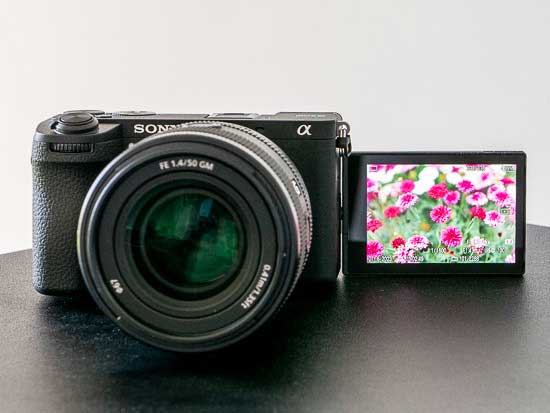 |
Sony has added an AI deep learning processing unit to the newer camera which enables it to recognise far more subjects than the previous model, and also greatly improves the detection of humans and animals/birds.
The A6600 can only recognise the eye and face of a human, and the eye of an animal.
For the first time on an Sony APS-C sensor camera. the A6700 can recognise a human via its pose as well as its eye and face. So if the person’s head is turned away from the camera, the A6700 will still accurately detect the subject as human based on its AI deep learning.
Animal and bird detection has been expanded from just being able to recognise the eye on the A6600 to the eye, head and body on the A6700.
As well as humans and animals, the A6700 also has the ability to recognise airplanes, cars, trains and insects. The A6600 cannot recognise any of these subjects.
The two models are evenly matched when it comes to continuous shooting speeds, with both models offering 11fps burst shooting with Full AF/AE tracking.
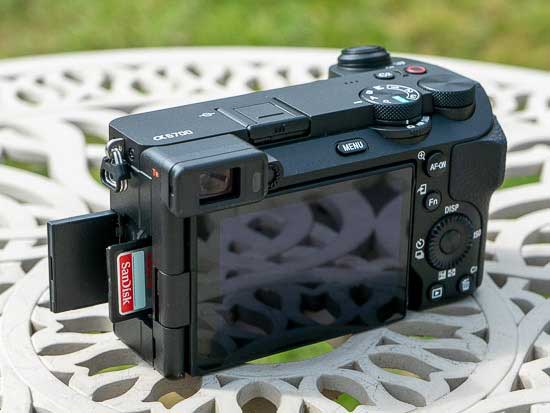 |
There is one significant difference between them though that has more of an impact on burst shooting performance – the buffer size.
The A6700 has a much larger buffer than the A6600, being able to shoot at 11fps for over 1000 Fine JPEGs, 59 RAW images or 44 RAW and JPEGs in one high-speed burst.
In comparison the A6600 can only manage 116 JPEG or 46 RAW files at full speed before its buffer is full and the burst shooting rate slows down.
Secondly, the fastest rate on the A6700 is available with either the mechanical shutter or the completely silent electronic shutter, but the A6600 cannot shoot silently at 11fps, which could be the difference between capturing that candid moment or distracting your subject and missing the shot.
The Sony A6700 is an even more customisable camera than the previous A6600.
The rear Fn function button displays a quick-access menu of frequently used shooting settings, and you can choose which items appear on this menu.
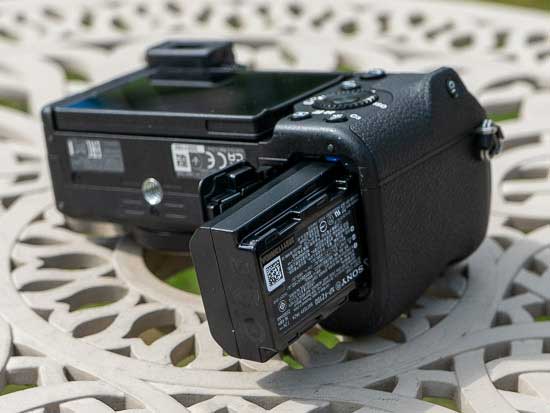 |
There are also three Custom buttons which can each be assigned a frequently used function for direct access.
Even the movie button can be customised, along with the left, right, down and centre rear panel navigation buttons, as well as the Fn button’s role in playback mode.
Along with integrated 2.4GHz and 5GHz wi-fi, a low-power, low-bandwidth Bluetooth 4.1 data connection is also available on the A6700.
This lets you connect your camera to a smart device even when the A6700 is turned off for easier transfer of images. The Bluetooth connection can also be used to sync GPS location data from your smartphone.
In terms of the available shooting modes, there are three Memory modes marked 1, 2 and 3 on the shooting mode dial. These allow you to store three frequently used shooting set-ups for quick access, and within each Memory mode is a further four customisable sub-mode pre-sets which can be saved in-camera.
There are also the usual auto, semi auto and manual modes, plus a Scene Selection position and a Movie mode that works in conjunction with the video record button that has been re-located to the top-panel.
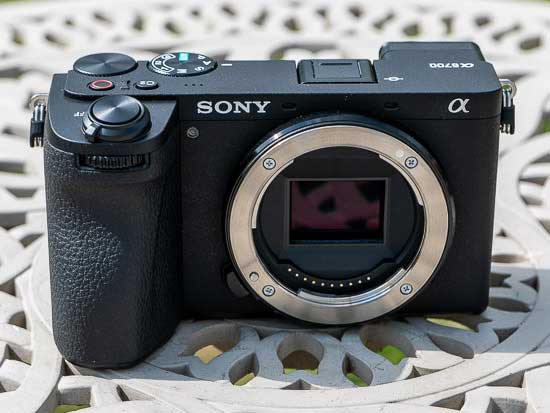 |
The A6700 offers much more advanced video recording specs and performance than the older A6600.
The A6700 can capture oversampled 4K from 6K at up to 60p and also 4K/120p with a 1.62x crop. Video can be captured in 10-bit 4:2:2 or 4:2:0 in either H.265 or H.264 AVC files.
The Slow and Quick motion mode offers frame rates ranging from 1fps to 240fps at 1080p quality.
In addition, the one-touch movie button has been relocated from its rather awkward position on the rear-shoulder of the A6600 to the top-panel of A6700.
The Sony A6700 also supports the newer Digital Audio Interface (via the Multi Interface Shoe) to enable use of the ECM-B1M digital shotgun microphone.
It offers the clever Auto Framing feature which uses the camera’s AI-based subject recognition technology to automatically crop the frame to keep the subject in a prominent position when shooting movies, even when the camera is mounted on a tripod.
 |
The A6700 features Sony’s S-Log 2 and 3 gamma curves which enable it to record greater dynamic range, providing you’re prepared to colour-grade the recording in post-production, plus you can now import and display your own LUTs, a feature that has trickled down from the ZV-E1.
There’s also the option of recording in HLG (Hybrid Log Gamma) so that you can shoot HDR-ready footage for playback on your compatible TV directly in-camera.
There is a Multi Interface Shoe / flash hotshoe on top of the A6700 for connecting an external flashgun or a compatible accessory such as the new ECM-B1M digital shotgun microphone, but as with the A6600, this new camera does not feature a built-in pop-up flash.
The much clearer although still lengthy main menu system from the ZV-E1 camera has been included on the A6700. There’s a My Menu tab that as the name suggests allows you to construct your own custom menu for easier access to your favourite camera settings and a new Main Menu which displays the main settings laid out in a grid.
The Sony A6700 uses the larger Z series battery, the NP-FZ100, that enables it to keep on shooting for a rated 720 shots per charge when using the viewfinder and 810 when using the LCD screen.
Subsequently the A6700 is capable of lasting for a full day’s shooting on one battery, something that will please the majority of Sony shooters.
 |
The A6700 can also be powered and charged via a USB connection, which is useful if you’re without your charger but can access a computer, and it has now been upgraded to the latest USB-C standard.
Finally there’s the battery compartment which, like all the other A6000-series cameras, also incorporates the single SD memory card slot (there are no dual slots on this camera).
There are two important differences though. Firstly, the newer Sony A6700 has a faster SD UHS-II memory card slot, whereas the A6600 uses the slower UHS-I standard.
Secondly, the A6700 now has a dedicated memory card port that’s hidden behind a lockable door on the left-hand side of the camera.
On the A6600 the memory card slot is next to the battery in a shared compartment on the bottom of the camera, which is much less convenient, especially when the camera is mounted on a tripod.
Compared to rivals like the Fujifilm X-T5 and Canon EOS R7, which have dual UHS-II card slots, the A6700 looks very under-powered in this department, which is especially annoying given its otherwise impressive abilities as a camera for capturing fast action.
Image Quality
All of the sample images in this review were taken using the 26 megapixel Extra Fine JPEG setting, which produces an average image size of around 8Mb.
The A6700 generates impressively clean results with minimal grain and detail loss. At ISO 6400 there’s only a slight increase in noise and reduction in detail, making this sensitivity completely usable.
Only at ISO 12800 does grain and detail smoothing become more severe, although it’s by no means unsightly. ISO 25600 is really the ceiling for acceptable image quality, such is the high level of grain, loss of detail and reduced dynamic range. ISOs 51200 and 102400 are best avoided due to the intrusive grain and colour speckling.
If you dial things down to more sensible sensitivities, though, the A6700 records excellent dynamic range, especially when assisted by Sony’s Dynamic Range Optimisation. Good colour vibrancy adds extra visual appeal while maintaining accurate colour reproduction, though this of course can be adjusted to your own preference in the camera settings.
Noise
The Sony A6700 has a standard sensitivity range of ISO 100 to 32000, expandable down to ISO 50 and up to 102400. Auto ISO operates within an ISO 100-6400 range and has selectable upper and lower limits. Two levels of high ISO noise reduction can be selected – Normal, or Low – or the processing can be disabled.
| JPEG |
|
ISO 50 (100% Crop) |
 |
|
ISO 100 (100% Crop) |
 |
|
ISO 200 (100% Crop) |
 |
|
ISO 400 (100% Crop) |
 |
|
ISO 800 (100% Crop) |
 |
|
ISO 1600 (100% Crop) |
 |
|
ISO 3200 (100% Crop) |
 |
|
ISO 6400 (100% Crop) |
 |
|
ISO 12800 (100% Crop) |
 |
|
ISO 25600 (100% Crop) |
 |
|
ISO 51200 (100% Crop) |
 |
|
ISO 102400 (100% Crop) |
 |
File Quality
The Sony A6700 has 4 different JPEG image quality settings available, with Extra Fine being the highest quality option. The A6700 also supports the HEIF file format with 2 options available. There are 2 different Raw compression settings, with Lossless Compressed being the highest quality option.
Thanks to a higher compression efficiency, HEIF files are smaller than JPEGs even though they contain significantly more data. How much more? Well, HEIF files are 10-bit whereas JPEG files are 8-bit. It’s a heck of a lot more tonal detail and wider colour gamut.
In the A6700 both HEIF and JPEG formats are available, although you can’t select both at the same time. Whichever format option you select can then be captured independently or simultaneously with RAW.
Here are some 100% crops which show the quality of the various options, with the actual file size shown in brackets.
Dynamic Range Optimizer
D-Range Optimiser (DRO) is Sony’s solution to improve shadow detail in photos taken in contrasty light. There are 5 different levels and an Auto option.
Creative Looks
There are 10 Creative Look preset effects that you can use to change the look of your images which are available when shooting JPEG and/or Raw files.
There are ten creative look presets for JPEG pictures and an additional six ‘custom’ presets can be manually stored for quick access. The presets are Standard (‘ST’), Portrait (‘PT’), Neutral (‘NT’), Vivid (‘VV’), ‘VV2’, ‘FL’, ‘IN’, ‘SH’, Black & White (‘BW’) and Sepia (‘SE’).
|
ST |
 |
|
PT |
 |
|
NT |
 |
|
VV |
 |
|
VV2 |
 |
|
FL |
 |
|
IN |
 |
|
SH |
 |
|
BW |
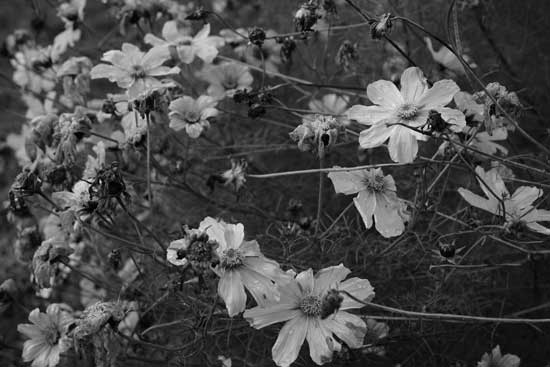 |
|
SE |
 |
Picture Profiles
The Sony A6700 offers a range of 11 Picture Profiles which are available when shooting JPEG and/or Raw files.
In addition to the creative looks, there are picture profile primarily designed for video use. By default, the ten parameters (PP1-PP11) are set to cover the following in-camera gamma profiles; Movie, still, Cine1-4, ITU709, ITU 709 (800%), S-Log-2, S-Log3 and HLG1-3), with manual control over numerous parameters including black level, colour mode and saturation.
|
PP OFF |
 |
|
PP1 |
 |
|
PP2 |
 |
|
PP3 |
 |
|
PP4 |
 |
|
PP5 |
 |
|
PP6 |
 |
|
PP7 |
 |
|
PP8 |
 |
|
PP9 |
 |
|
PP10 |
 |
|
PP11 |
 |
Sample Images
This is a selection of sample images from the Sony A6700 camera, which were all taken using the 26 megapixel Extra Fine JPEG setting. The thumbnails below link to the full-sized versions, which have not been altered in any way.
Sample RAW Images
The Sony A6700 enables users to capture RAW and JPEG format files. We’ve provided some Sony RAW (ARW) samples for you to download (thumbnail images shown below are not 100% representative).
Sample Movies & Video
This is a sample 4K movie at the quality setting of 3840×2160 pixels. Please note that this 16 second movie is 671Mb in size.
This is a sample 4K movie at the quality setting of 3840×2160 pixels. Please note that this 17 second movie is 469Mb in size.
This is a sample 4K movie at the quality setting of 3840×2160 pixels. Please note that this 16 second movie is 335Mb in size.
This is a sample 4K movie at the quality setting of 3840×2160 pixels. Please note that this 16 second movie is 134Mb in size.
This is a sample 4K movie at the quality setting of 3840×2160 pixels. Please note that this 16 second movie is 134Mb in size.
This is a sample 4K movie at the quality setting of 3840×2160 pixels. Please note that this 16 second movie is 134Mb in size.
This is a sample 1080p movie at the quality setting of 1920×1080 pixels. Please note that this 15 second movie is 268Mb in size.
This is a sample 4K slow-motion movie at the quality setting of 3840×2160 pixels. Please note that this 30 second movie is 805Mb in size.
This is a sample 4K slow-motion movie at the quality setting of 3840×2160 pixels. Please note that this 61 second movie is 1.1Gb in size.
Product Images


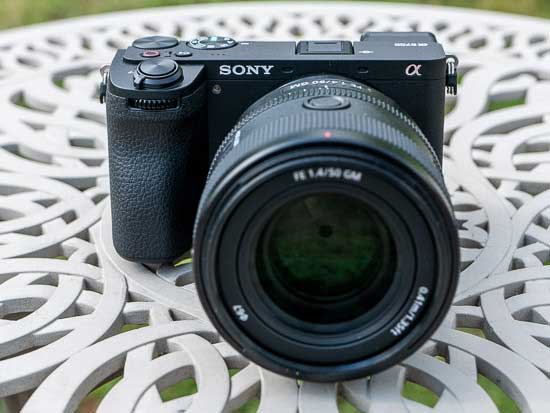







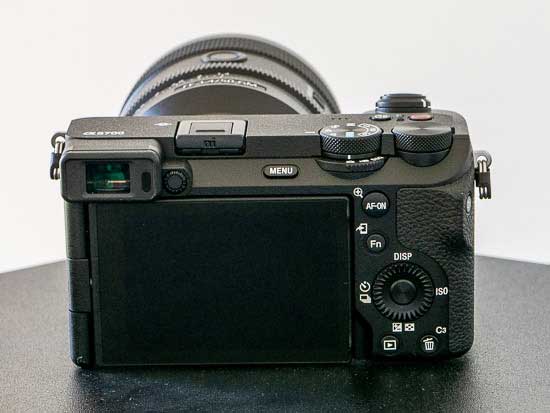
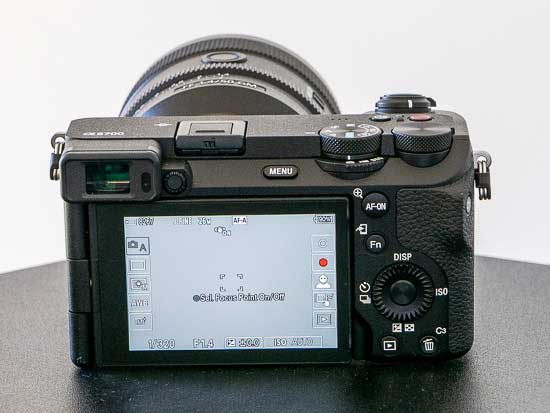

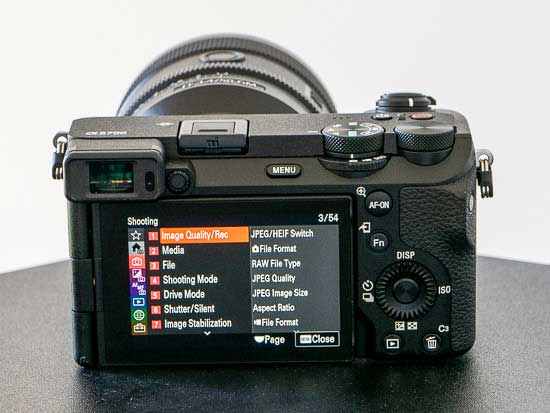
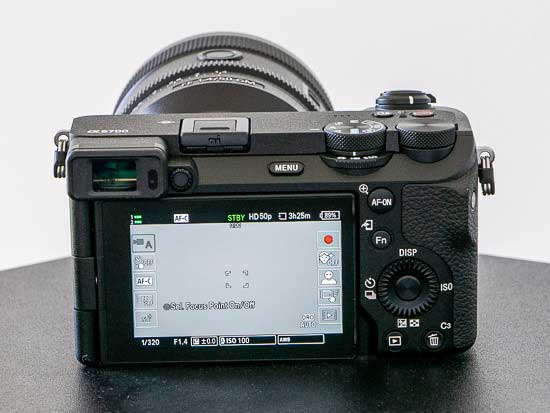
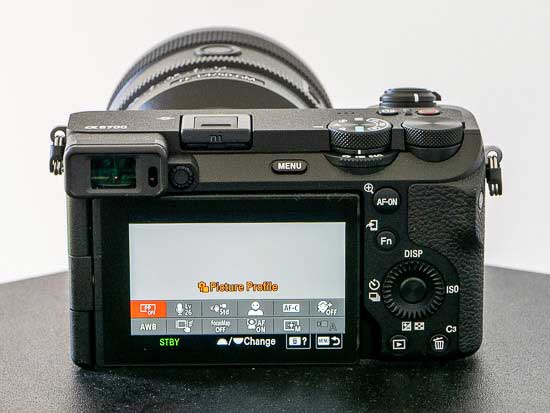

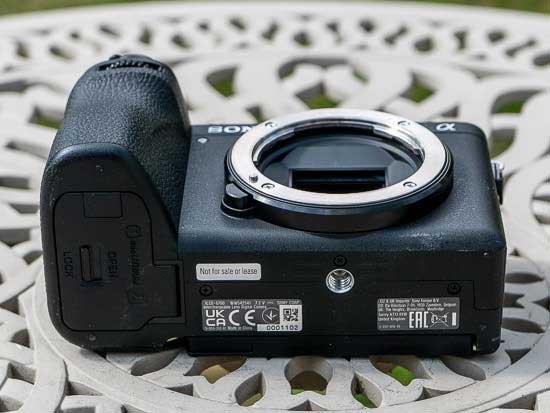
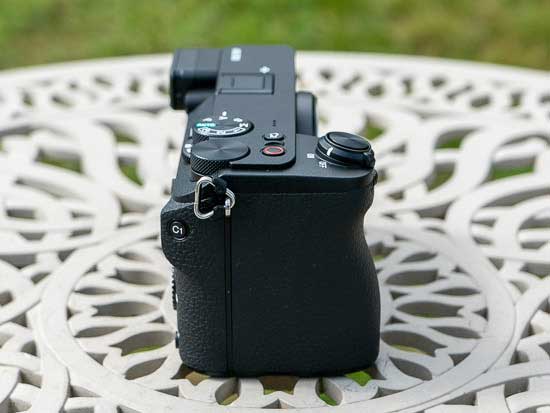
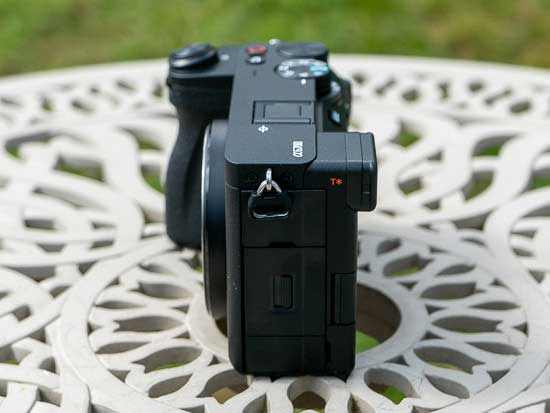


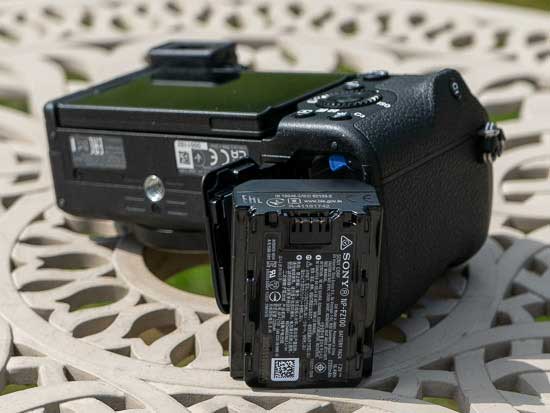
Conclusion
It’s probably fair to say that the previous A6600 model from 2019 was a little underwhelming, offering few real innovations and some annoying drawbacks that meant that it fell short of its flagship billing.
Fast forward to 2023 and Sony have gone all-out to make this their best ever APS-C camera, with a new sensor and processor, improved video, the very latest A7-series AF system complete with AI subject recognition, and more refined handling. Indeed, Sony are billing the new A6700 as representing a giant leap forwards for their venerable range of APS-C sensor cameras.
There are still a few notable bugbears that we can’t quite understand, but overall the new Sony A6700 is a much more worthy rival to the likes of the Fujifilm X-T5 and Canon EOS R7 than its predecessor was.
The main, annoyingly continuing drawbacks of the A6700 are principally the rather dated, low-resolution EVF and LCD screen, withe former being made brighter and the latter receiving a very small bump in resolution.
The A6700’s screen does now have a fully articulating vari-angle design which is a big improvement on the A6600’s flip-up design, making it more versatile screen for vlogging, movie shooting and photography in general.
The newer Sony A6700 has a faster SD UHS-II memory card slot, whereas the older A6600 uses the slower UHS-I standard, and there is now a dedicated memory card port that’s hidden behind a lockable door on the left-hand side of the camera. Several rivals have dual-card slots, so Sony is still lagging behind a little here.
This is also true of burst shooting, with the 11fps rate with Full AF/AE tracking not looking that great alongside the 20 and even 30fps rates of other cameras. On the flip-side, the A6700 does have a larger buffer than most other cameras, being able to shoot at 11fps for over 1000 Fine JPEGs, 59 RAW images or 44 RAW and JPEGs in one high-speed burst.
Compared to its two main rivals, the Fujifilm X-T5 offers more megapixels, the special Pixel Shift Multi-Shot mode, 6K/30p video, faster burst shooting, two-stops better IBIS system, a higher-resolution LCD screen and EVF, and dual memory cards, while the Sony A6700 provides 4K/120p video recording, a much bigger buffer for burst shooting, larger ISO range, a vari-angle screen and a significantly lower price.
Meanwhile, the Canon EOS R7 offers more megapixels, much faster burst shooting, three-stops better IBIS system, a higher-resolution LCD screen, dual memory cards and a lower price, while the Sony A6700 provides slightly more capable video recording, a bigger buffer for burst shooting, larger ISO range, a backside-illuminated (BSI) sensor, more sophisticated subject detection, and longer battery life.
Overall, the new Sony A6700 is a much better flagship APS-C sensor camera that its predecessor was, striking a much better balance between new and old tech.
With lots of features trickling down from higher up the range, the A6700 really does come across like the full-frame A7 IV camera in a smaller, lighter format, which for many enthusiasts will be music to their ears.
| Ratings (out of 5) | |
|---|---|
| Design | 4.5 |
| Features | 4.5 |
| Ease-of-use | 4.5 |
| Image quality | 4.5 |
| Value for money | 4 |
Main Rivals
Listed below are some of the rivals of the Sony A6700.
Canon is back in the APS-C game with the much-anticipated launch of the EOS R7, a very capable prosumer camera with a clear focus on speed. Billed as the mirrorless successor to the much loved EOS 7D Mark II DSLR, does the new R7 have what it takes to compete against the likes of Fujifilm and Sony? Find out now by reading our in-depth Canon R7 review…
The new Fujifilm X-S20 aims to be a hybrid mirrorless camera for the masses, offering 6K video, 26 megapixel stills, a specific shooting mode for vloggers and long battery life, all in a small, well-built body. Is the XS20 the ultimate do-it-all camera? Find out now by reading our in-depth Fuji XS20 review complete with full-size sample images and videos.
The Fujifilm X-T5 is the successor to the very popular X-T4 which was released in 2020, principally adding a new 40 megapixel sensor, 160 megapixel Pixel Shift Multi-Shot mode, 6.2K video recording and better auto-focusing. Can the new XT5 improve on what was already an outstanding camera? Find out now by reading our in-depth Fujifilm X-T5 review…
OM System have just updated their enthusiast model for 2022 with the launch of the new OM-5, but is it any good? Find out now by reading our review of the OM System OM5 mirrorless camera, complete with full-size sample photos and videos…
The Sony A6400 is a new mirrorless camera with an APS-C size sensor and a cutting-edge auto-focusing system. With 24.2 megapixels, 4K movie recording, a touchscreen 180-degree LCD touchscreen, 11fps burst shooting, electronic viewfinder, built-in flash, and Wi-fi / Bluetooth / NFC connectivity, is this the best APS-C camera on the market? Read our Sony Alpha A6400 review to find out…
The A6600 is the new all-singing, all-dancing flagship camera in Sony’s extensive range of APS-C mirrorless cameras, but does it offer enough to out-gun both its main rivals and its cheaper siblings? Find out now by reading our in-depth Sony A6600 review, complete with full-size sample images and videos.
The new Sony Alpha A7 IV is a new 33 megapixel, 4K/60p video, 10fps burst shooting, cutting-edge auto-focusing hybrid full-frame mirrorless model that pulls no punches in its bid to be the only camera that you need. Find out why we think this is one of the best all-round cameras of 2021 by reading our in-depth Sony A7 IV review…
Sony are attempting to turn the camera world on its head by creating a new 35mm full-frame camera that’s the same size and weight as one with a smaller APS-C sensor. Have they succeeded with the new Sony A7C, and is it a great camera in its own right? Find out now by reading our Sony A7C review complete with full-size sample photos and videos.
The Sony ZV-E10 is a new APS-C sensor mirrorless camera that’s clearly targeted at videographers, with a vari-angle screen, fast auto-focusing, three-capsule direction microphone, and a wealth of vlogger-friendly shooting modes. Is this the ultimate mirrorless camera for aspiring YouTube creators? Read our in-depth Sony ZV-E10 review to find out…






